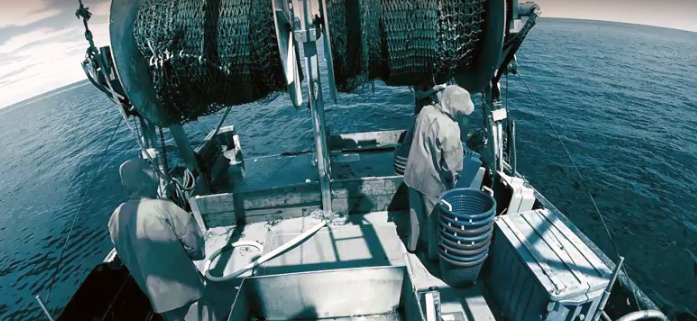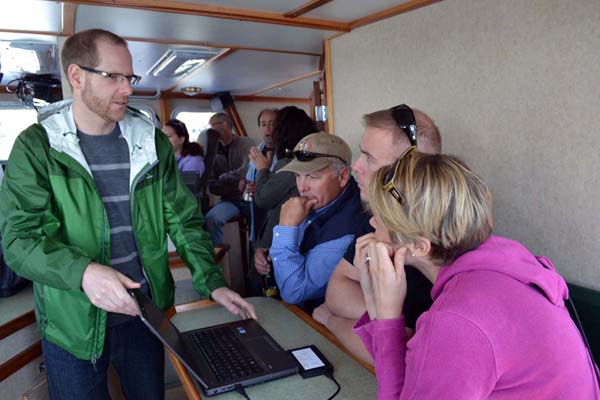Electronic monitoring
What is electronic monitoring?
Electronic monitoring is the use of video technology to track catches and discards of fish. Electronic monitoring should not be confused with vessel monitoring systems, which track the location of fishing vessels.

Why electronic monitoring?
At-sea monitoring of all fishing trips (100% monitoring) is required as part of the Council’s groundfish trawl catch share program in order to account for discards. Human observers currently do this monitoring, but in 2016 and 2017 the Council recommended that electronic monitoring be used in the midwater trawl whiting, fixed gear, non-whiting midwater trawl, and bottom trawl fisheries as a less expensive or more flexible alternative to human observers.
The Council considered electronic monitoring while planning the catch share program, but opted to continue using observers and increase the observation level to 100%. The Council also required that the industry, rather than NMFS, pay for the monitoring. When the catch share program was put in place, NMFS agreed to pay for a portion of the observer costs to help the fleet through the adjustment period. In September 2015, the industry was required to pay the full cost. For vessels, the requirement to pay for vessel observers is one of the most expensive compliance costs associated with participation in the catch share program.
All vessels are billed for observers on a per-day basis, so observer costs are the same for both small and large vessels. Because of this, individual fishing quotas could migrate to vessels with higher revenues, leaving fewer small harvesters in the fleet. Finally, the observer fee system puts pressure on vessels to fish in unsafe conditions. Because vessels are billed per day both for at-sea and for standby time during a trip, vessels may incur higher costs for standing down due to bad weather. Although much of the information collected by observers for catch share monitoring (mainly accounting for discarded fish) could be collected through electronic monitoring, cameras cannot completely fulfill all scientific monitoring needs. Therefore, under the EM program observers will still be necessary to collect biological samples to support stock assessments and other important fishery-dependent information, such as interactions with protected species.
The Council will continue to work with the industry and others as issues arise to provide additional recommendations to NMFS.
History of electronic monitoring
2022: EM Regulatory Development
- 2020: Video review discussions continue
- 2019: Third-party video review discussed
- 2018: Review of draft procedural directive, extension of EFP
- 2017: Final preferred alternative for non-whiting midwater trawl and bottom trawl fisheries
- 2016 Electronic monitoring actions
- 2015: Council looks at electronic monitoring for whiting and fixed-gear IFQ fleets
- 2014: Final preferred alternatives developed
- 2013: GEMPAC and GEMTAC created, alternatives developed
- 2013: Electronic Monitoring workshop meeting materials
- 2012: Public scoping begins
- 2011: Early exploration of electronic monitoring
News & updates
- Ad Hoc Equity & Environmental Justice Committee online meeting November 6, 2024
- Ad Hoc Equity & Environmental Justice Committee online meeting August 1, 2024
- Ad Hoc Equity & Environmental Justice Committee online meeting July 11, 2023
- Groundfish Electronic Monitoring Policy Advisory and Technical Advisory Committees to meet June 16, 2023
Events
Upcoming Council Meeting
September Council meeting
Spokane, WA
DoubleTree Spokane City Center 322 N Spokane Falls Court - Spokane, WA 99201 509-455-9600
Previous Council Meeting
June Council meeting
Rohnert Park, CA
DoubleTree Sonoma One DoubleTree Drive - Rohnert Park, CA 94928 707-584-5466

Contacts
Council Office: 503-820-2280